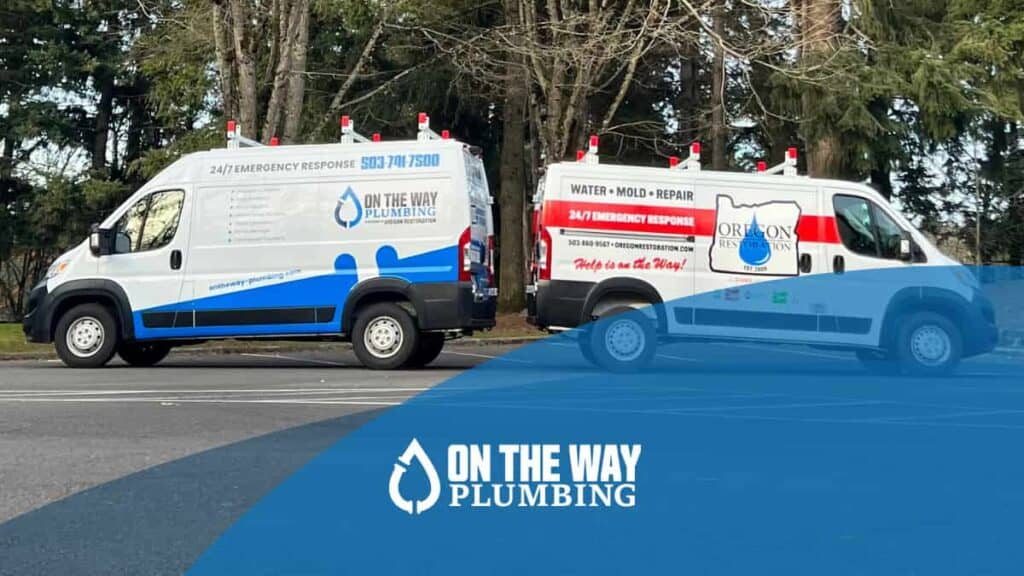A burst pipe isn’t just a plumbing problem—it’s a property-wide emergency. Water seeps into floors, walls, and insulation. Every hour increases the risk of mold, structural damage, and skyrocketing repair costs.
Most homeowners and property managers find themselves calling one company for the fix, another for the cleanup, and then juggling schedules, documentation, and insurance claims. It’s frustrating, time-consuming, and expensive.
But it doesn’t have to be. When the plumber and the restoration team work together from the start, the entire process moves faster, costs less, and puts you back in control.
The Typical Plumbing Problem Is Often the Start of a Bigger Issue
Most people think of plumbing issues as isolated, mechanical problems: a pipe bursts, a valve leaks, or a water heater fails. Call a plumber, patch the pipe, and you’re done—right?
Unfortunately, water has a way of finding its way into everything it shouldn’t. What starts as a plumbing failure often triggers a cascade of damage behind walls, beneath floors, and inside your home’s structure—well beyond what a typical plumbing fix addresses.
Hidden Water Damage Is Common and Often Missed
Water doesn’t just stay where the leak occurred. It travels through the path of least resistance—spreading beneath hardwood floors, saturating drywall, and pooling inside wall cavities or crawlspaces. If you’re lucky, the signs are visible: staining, buckling, or bubbling paint. But in many cases, the damage is hidden until it’s widespread and expensive to repair.
Professional plumbers often don’t have the tools or mandate to assess the full extent of moisture migration. They stop the leak—but the trapped water remains, creating the perfect conditions for secondary damage to take hold. This is why professional water damage assessments often include moisture mapping, infrared imaging, and hygrometric testing—none of which are typically part of a standard plumbing visit.
Slow Leaks Create Mold-Friendly Conditions
One of the most insidious threats from even minor plumbing failures is mold. A small drip under a sink, behind a shower wall, or from a faulty appliance line can remain unnoticed for weeks. By the time the leak is found, mold has often taken hold—feeding on drywall paper, wood framing, and insulation in dark, humid conditions.
Even after a plumber stops the source of the leak, mold remediation requires a completely different scope of work—HEPA filtration, containment barriers, demolition of affected materials, and often, clearance testing. If these steps aren’t coordinated with plumbing repairs, it leads to redundant work and more disruption.
Structural Materials Are at Risk
Wood framing, oriented strand board (OSB), subfloors, and insulation are all susceptible to damage from prolonged moisture exposure. Subfloors can delaminate. Joists can swell and warp. In multi-story buildings, water can migrate between floors, impacting ceiling systems and electrical infrastructure below.
It’s not uncommon for a homeowner to discover that what began as a pinhole leak in a copper pipe has now resulted in structural repairs costing tens of thousands of dollars—all because the water damage wasn’t caught or mitigated in time.
Insurance Claims Become More Complicated With Multiple Vendors
Many homeowners don’t realize that insurance carriers scrutinize claims involving multiple vendors more closely. If a plumber fixes the issue but fails to document the water damage, or if the mitigation team isn’t brought in immediately, it can result in:
- Denied or reduced coverage for secondary damage
- Questions about negligence or delay
- Multiple scopes of work that don’t align or overlap unnecessarily
When restoration and plumbing are siloed, documentation gaps are common. Photos, mitigation logs, and material moisture readings may not be shared between teams, leaving insurance adjusters without a clear timeline or narrative. This can cause delays in approvals—or outright disputes about what should be covered.
One Team. One Timeline. One Call.
When you work with On The Way Plumbing and Oregon Restoration, you’re not hiring two companies—you’re engaging one coordinated team. From the moment a plumbing issue is discovered, both sides of the problem are addressed: the source of the water, and the damage it caused.
There’s no handoff. No delays. No miscommunication between vendors. The same internal systems, documentation protocols, and leadership team drive the entire response—so every step is aligned from the outset.
- Here’s what that looks like in practice:
A property manager calls On The Way Plumbing for an active leak. - The plumber is dispatched same-day to shut down the water and assess the source.
- If mitigation is needed, Oregon Restoration is looped in immediately—often while the plumber is still on site.
- The mitigation team begins moisture mapping and setting containment within hours—not days.
- All photos, notes, scopes, and job documentation are shared internally between the two teams, creating a clean, cohesive file for the insurance adjuster.
- Reconstruction, if needed, is scoped and scheduled before demolition is even complete.
- All communication and documentation flows internally between the On The Way Plumbing and Oregon Restoration teams. Because both sides are part of the same organization, there’s no need for the homeowner or property manager to act as the go-between. Our teams coordinate directly, so plumbing, mitigation, and restoration all move forward without delays or disconnects.
Fewer Surprises. Fewer Mistakes. Faster Recovery.
With most plumbing emergencies, time is the enemy. Every hour a wall stays wet increases the chances of needing to tear it out. Every delay in reporting increases the risk that an insurance claim will be denied or reduced.
When Oregon Restoration and On The Way Plumbing work in tandem, those timelines compress. There’s no lost time waiting for another contractor to show up. No risk that something gets missed. No back-and-forth over responsibility. Just a streamlined response that protects the home, speeds up recovery, and lowers total costs.

